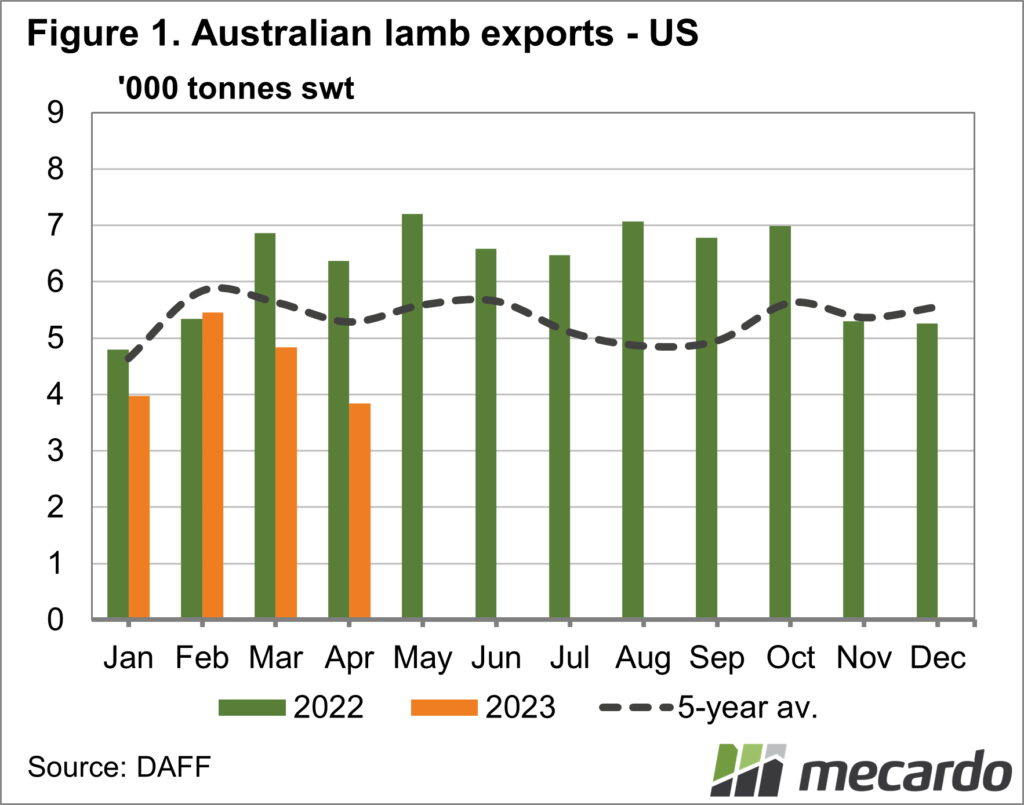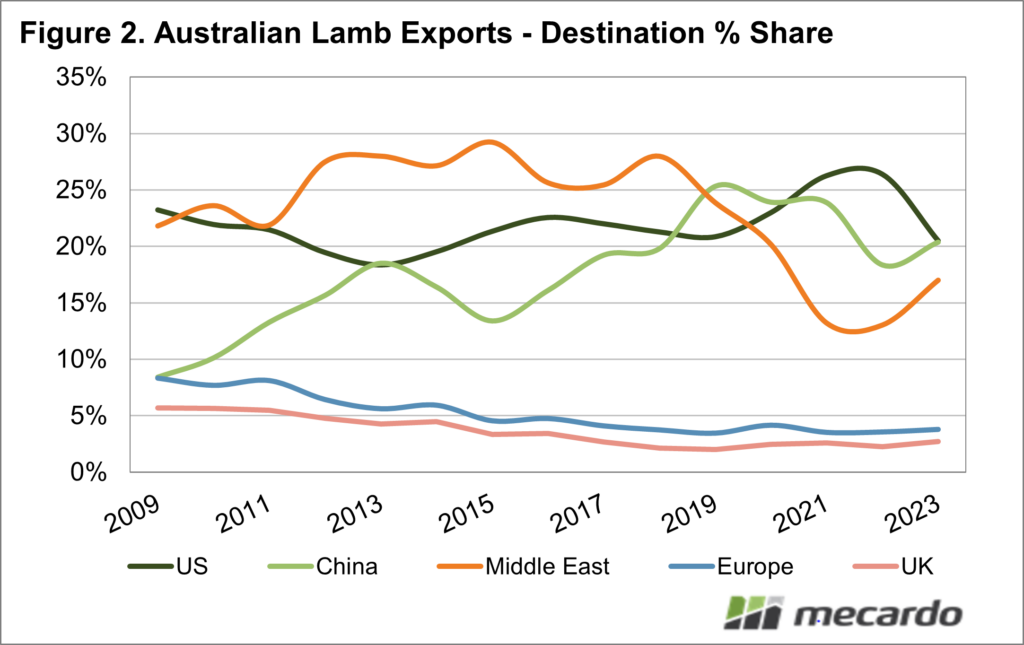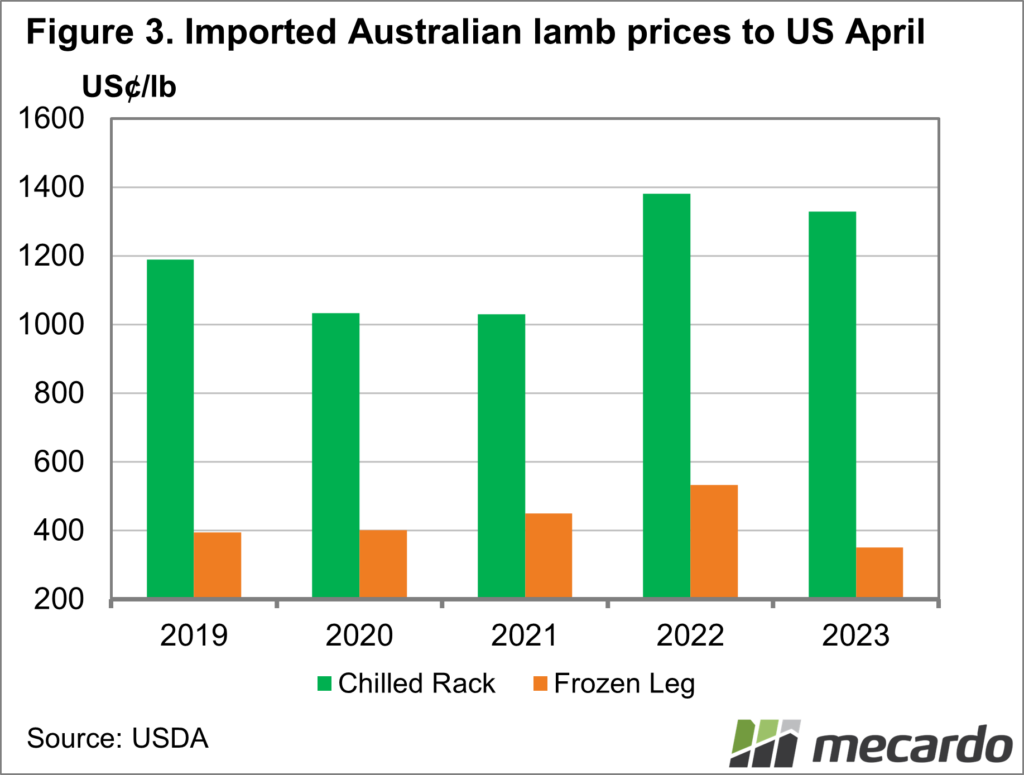We saw Richie Benaud on Meat and Livestock Australia’s annual January Lamb ad a few year’s ago, but the title of this article on lamb exports is purely an observation of the total tonnes of lamb exported in April. Total Lamb exports for April were 22,222 tonnes. It immediately reminded me of the famous line from the ‘Twelfth Man’, impersonating Ritchie Benaud, ‘two for two two two’. Anyway, enough about misspent time as a teenager.
Lamb exports fell in April, but this was to be expected. April is a day shorter than March, and this year we had three public holidays during the month. Less lamb was produced, and exports were down 11.6% on March, but the highest April total for three years. Lamb exports were only up marginally on last year.
Figure 1 is of some concern for lamb producers. Lamb exports to the US were down heavily on last year, losing 40%. The US market was driving exports and export prices last year and helped prop the market up in saleyards. Some of that demand seems to have dissipated.
With less lamb going to the US, more found its way to the Middle East, which took more lamb than the US for the first time since May 2020. China also lifted demand, taking 36% more lamb than in April 2022.
The Covid recovery in China, and possibly weaker supply from New Zealand, appears to be driving demand for Aussie lamb. Figure 2 shows that for the year to date, China has now moved back to equal market share with the US, after trailing for two years. The recovery in the Middle East is also welcome competition.
For indications of weakening demand from the US, we look to price. Supply, in this case, exports, is only one part of the story. If the price is down as well it’s a sign of lower demand. Figure 3 shows April prices for lamb imported from Australia. Both high-value chilled racks and lower-value frozen legs are down on last year. Legs are down 34% on last year, and it’s little wonder exporters are looking for other markets for this lower-value product.
What does it mean?
Weakening demand from the US for lamb, at a time when our supplies are ramping up isn’t great news for saleyard prices. Processors have managed to find other markets thus far this year, but they will be hoping the US grilling season sees demand pick up.
The number of sheep in the US continues to dwindle, and with beef prices on the rise, there is some hope they might start again paying more for our lamb.
Have any questions or comments?
Key Points
- Lamb exports in April were down on last month, but steady relative to 2022.
- Exports to the US have fallen heavily, with China and the Middle East picking up the slack.
- Export lamb prices to the US are lower than last year, indicating weakening demand.
Click on figure to expand
Click on figure to expand
Click on figure to expand
Data sources: DAFF, MLA, Mecardo















